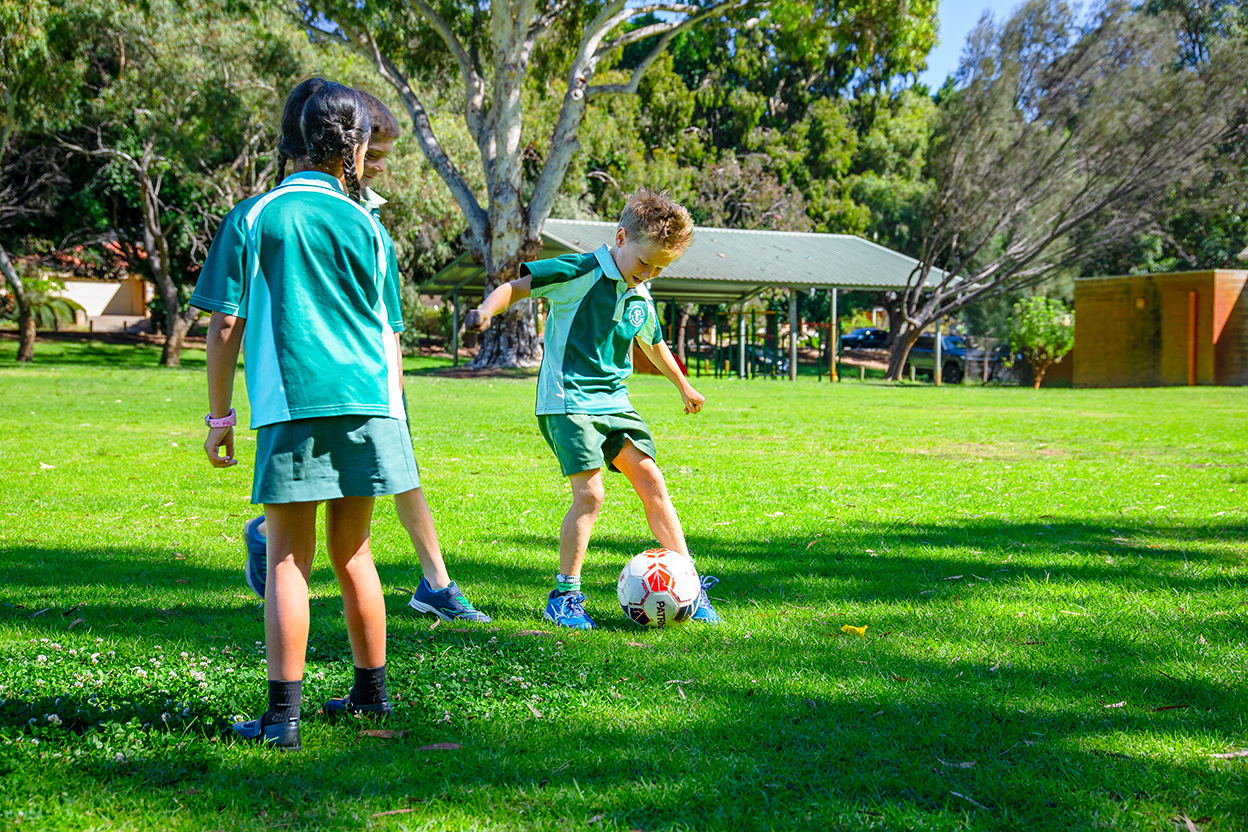
Health & Physical Education
In Health and Physical Education, students learn how to enhance their own and others’ health, safety, wellbeing and physical activity participation in varied and changing contexts. The Health and Physical Education curriculum (P–10) offers students an experiential curriculum that is contemporary, relevant, challenging, enjoyable and physically active.
In Health and Physical Education, students develop the knowledge, understanding and skills to make decisions and take action to strengthen their sense of personal identity and autonomy, build resilience, manage risk and develop satisfying, respectful relationships. They learn to take a critical approach to questioning physical activity and health practices and to use inquiry skills to research factors that influence the health, safety, wellbeing, and physical activity patterns of themselves, individuals, groups and communities. As students grow and mature, they learn to access, analyse and apply a variety of resources for the benefit of themselves and the communities to which they belong.
Integral to Health and Physical Education is the acquisition of movement skills, concepts and strategies to enable students to confidently, competently and creatively participate in a range of physical activities in various contexts and settings. Students learn about how the body moves; how to approach and resolve challenges; how to optimise movement performance; and the benefits of physical activity to themselves, others and communities. Through movement in a variety of contexts and settings, students acquire, practise, manage and refine personal, interpersonal, social and cognitive skills.
Through Health and Physical Education, students learn how to enhance their health, safety and wellbeing and to contribute to building healthy, safe and active communities. It provides opportunities for students to develop skills, self-efficacy and dispositions to advocate for, and positively influence, their own and others’ health and wellbeing.
The Health and Physical Education curriculum teaches students how to be part of a healthy, active population and experience the personal and social benefits of living a healthy, active and fulfilling life. Given these aspirations, the curriculum has been shaped by the following five interrelated propositions that are informed by a strong evidence base:
- Focus on educative purposes
The curriculum focuses on the development of disciplinary knowledge, understanding and skills, which underpin Health and Physical Education. The priority for the curriculum is to provide ongoing, developmentally appropriate and explicit teaching and learning experiences about health and movement. - Take a strengths-based approach
A strengths-based approach is characterised by focusing on supporting students to develop knowledge, understanding and skills required to make healthy, safe and active choices. This approach affirms that students and their communities have particular strengths which can be nurtured to improve health. - Value movement
The curriculum focuses on the explicit development of movement skills and concepts required for students to participate in a range of physical activities with competence and confidence. This supports ongoing participation across the lifespan, and positive health outcomes. - Develop health literacy
The development of health literacy skills is essential for people to increase control over their health and for better management of disease and risk, at both an individual and population level. The curriculum focuses on developing knowledge, understanding and skills related to the following health literacy dimensions:
ointeractive – knowledge, understanding and skills related to making decisions and setting goals to enhance health
ocritical – skills related to being able to selectively access and critically analyse health information from a variety of sources and apply this to promote own and others’ health. - Functional
Knowledge, understanding and skills related to comprehending, evaluating and applying health information. - Include a critical inquiry approach
The curriculum engages students in critical inquiry processes that develop research skills and the ability to appraise health and physical activity knowledge, and the way this influences decision-making and health-related behaviours.